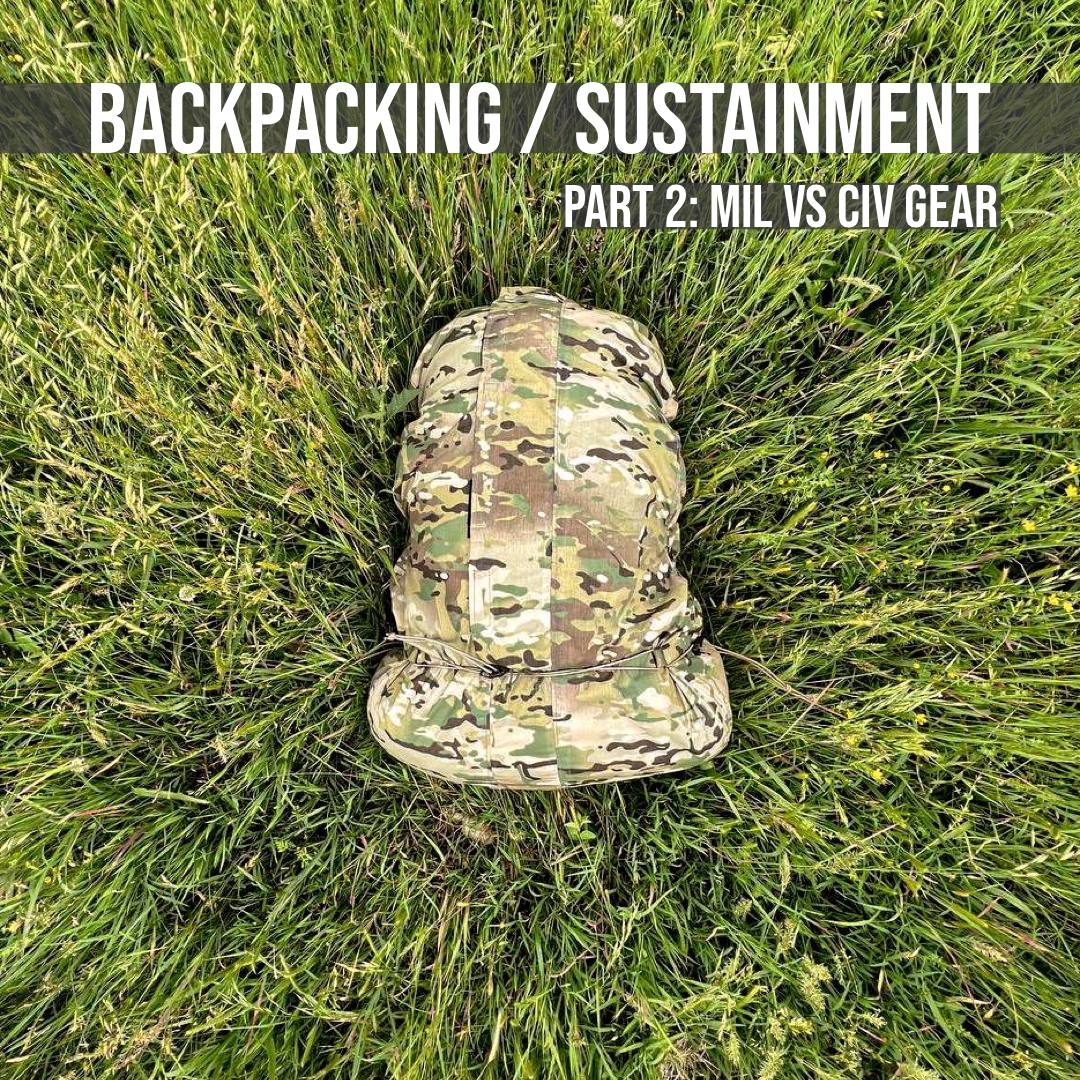Cart
Your cart is empty
Looks like you haven’t added anything yet, browse our sale below!
Continue Shopping
“Recce” is really big right now. It’s become almost a joke, but we think it’s an ideal place for civilians to start. For years now we’ve copied the loadouts of tier 1 operators and door kickers. There is a place for that, but a well regulated militia needs a lot more infantryman. Small, mobile, agile, decentralized groups of men on foot that can navigate overland to engage targets and be self-sufficient in the field. However, this means that you’ll need to carry a lot more gear than a guy who is on a short assault mission with the most wealthy and powerful nation in the world to support him with transportation and resources. Carrying both sustainment gear and a combat load can get heavy really fast.
We’ve already established that we want to cut weight wherever possible. But you also want it to be durable to stand up to the abuse of this activity. Typically, military equipment is incredibly durable. When people say something is MilSpec, they’re really just saying “most Marines weren’t able to break this.” but this gear is often incredibly heavy, bulky, and uncomfortable.
In contrast, we have the civilian market which is typically lightweight, sleek, and built for the best user experience and comfort. The companies that make these strive to hit these criteria to keep the customer happy so they’ll continue purchasing their equipment. This equipment is also designed with a much lower duty cycle and less abuse in mind and so it is typically less durable. Another main drawback is that it is difficult to find these in camouflage or even earth tones.
This section will likely ruffle some feathers. As a bio-engineer, I’m speaking from a kinesiological perspective. I hope that these posts will stimulate awareness, innovation, and growth.
EXAMPLE: The military still issues external frame rucks that are mostly cubic, creating more leverage as the weight is carried farther from the body. Additionally, the frame creates 2-3” of dead space contributing to that leverage. Conversely, Civilian packs are more rectangular, carrying the weight closer to the body. And if there is dead space on the back of internal frame packs, it is from a “trampoline support” that increases ventilation and reduces hot spots. The military ruck will weigh much more and have a more rigid frame which is a result of their ethos about equipment — “it’s ok if it’s heavy as long as it’s durable.” There are countless examples of this very same thing (Radios, sleeping pads, plate carriers, boots, etc) where the military equipment is typically heavy and uncomfortable but durable and camouflaged, and the civilian equipment is lightweight and comfortable but less durable and not camouflaged. That’s why we’re making a pack cover. ;)
As you increase the weight of each item in the ruck you have to increase the strength of the ruck to carry it which increases the weight of the ruck in a vicious positive feedback loop. Conversely, if you look at ultralight backpackers, many don’t even use frames because they have cut weight so much that a frame is no longer necessary. You’ll still need a frame to carry sustainment and combat gear, but we could learn from these lightweight backpackers.
Thankfully both military and civilian gear have been improving in their areas of weakness in recent years. So should you buy all military equipment? Or all civilian? The best solution is often somewhere in the middle. (This applies to a lot more than gear choices) You should be smart, weigh the pros and cons of both, and buy what makes sense. We use a mixture of both. More on the specifics of that soon.
Related Instagram Post
For some excellent resources to learn about these styles, here are some YouTube pages we recommend.
Mil:
Looks like you haven’t added anything yet, browse our sale below!
Continue Shopping
Leave a comment
This site is protected by hCaptcha and the hCaptcha Privacy Policy and Terms of Service apply.